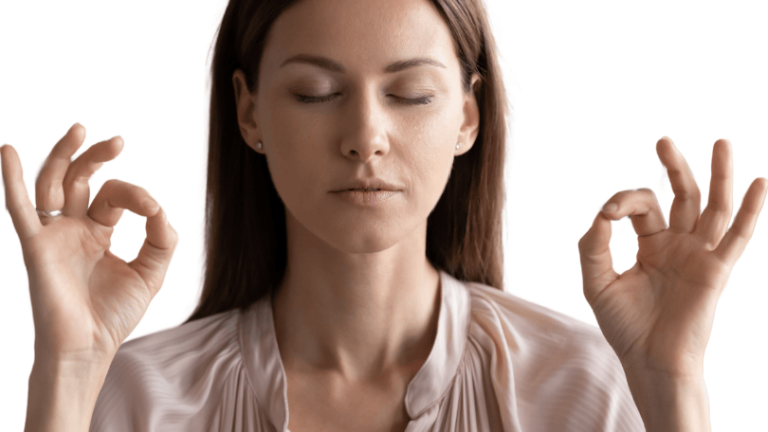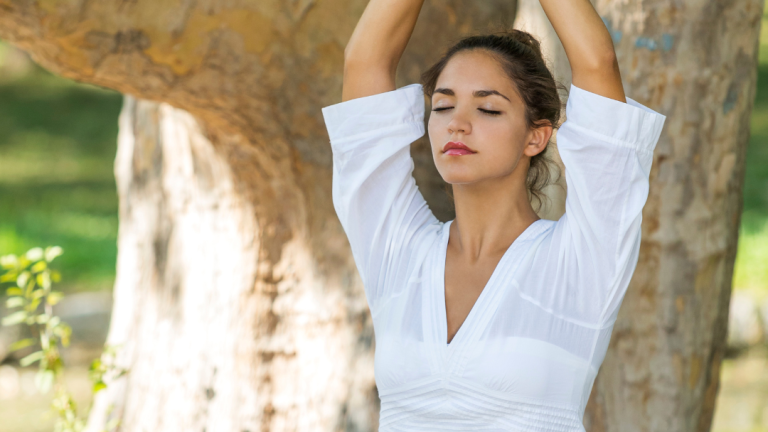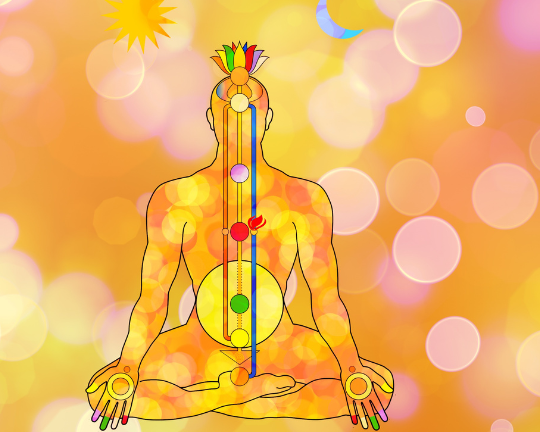
5 Yoga Poses To De-Stress : Finding Calm in Chaos
Table of Contents
In today’s fast-paced world, stress has become a part of our daily lives. While some stress is normal, chronic stress can take a toll on your mental and physical health. Thankfully, yoga offers a natural and effective way to reduce stress, calm the mind, and restore balance. Let’s explore how yoga can help you find calm in the chaos.
How Does Yoga Help Relieve Stress?
In today’s fast-paced world, stress has become an inevitable part of life. From work deadlines to personal responsibilities, daily pressures can take a toll on both the mind and body. Yoga offers a natural and effective way to relieve stress by combining movement, breath control, and mindfulness. Let’s explore how yoga helps create a sense of calm and balance.
1. Activates the Relaxation Response
When you’re stressed, your body goes into “fight or flight” mode, releasing stress hormones like cortisol and adrenaline. While this response is helpful in emergencies, prolonged activation can lead to anxiety, insomnia, and other health issues. Yoga activates the parasympathetic nervous system, which counteracts stress by shifting the body into “rest and digest” mode. This reduces heart rate, lowers blood pressure, and promotes relaxation. Gentle poses such as Legs Up the Wall (Viparita Karani) and Child’s Pose (Balasana) help trigger this relaxation response.
2. Releases Muscle Tension
Stress often manifests physically in the form of tight shoulders, a stiff neck, or tension headaches. Holding yoga poses for extended periods allows the muscles to stretch and release built-up tension. Postures such as Forward Fold (Uttanasana) and Downward Dog (Adho Mukha Svanasana) help lengthen the spine, relax the shoulders, and improve blood circulation, which soothes muscle stiffness. By regularly practicing these poses, you can experience long-term relief from stress-related body aches.
3. Enhances Breath Control
Breath and emotions are deeply connected. When you’re anxious, you may notice shallow, rapid breathing. Yoga encourages deep, mindful breathing, known as Pranayama, which calms the nervous system and reduces anxiety. Techniques such as Square Breathing (Sama Vritti) and Alternate Nostril Breathing (Nadi Shodhana) slow down the heart rate, balance oxygen levels, and promote inner peace. Controlled breathing also lowers cortisol levels, helping you manage stress more effectively.
4. Encourages Mindfulness and Mental Clarity
A cluttered mind filled with worries about the past or future can make stress overwhelming. Yoga cultivates mindfulness, or the practice of staying present in the moment. When you focus on your breath and movement, your mind naturally shifts away from stressors. Poses like Savasana (Corpse Pose) and guided meditations help train your mind to let go of distractions and embrace stillness. Over time, mindfulness enhances mental clarity, emotional resilience, and overall well-being.
5. Promotes Emotional Balance and Well-being
Beyond physical relaxation, yoga supports emotional stability. Studies show that yoga helps regulate mood, reduce symptoms of depression, and enhance overall happiness. By incorporating heart-opening poses such as Camel Pose (Ustrasana) and Bridge Pose (Setu Bandhasana) into your routine, you can create space for emotional release and self-awareness. The combination of movement, breath, and meditation fosters a sense of inner peace and balance, making it easier to handle stress in daily life.
Best Yoga Poses for Stress Relief
Here are some gentle yoga poses to help you unwind and let go of stress:
1. Child’s Pose (Balasana)
- Kneel on the floor, bring your big toes to touch, and sit back on your heels.
- Stretch your arms forward and rest your forehead on the mat.
- Take slow, deep breaths and feel the tension melt away.
2. Cat-Cow Pose (Marjaryasana-Bitilasana)
- Begin in a tabletop position on your hands and knees.
- Inhale, arch your back (Cow Pose), and look up.
- Exhale, round your back (Cat Pose), and tuck your chin.
- Repeat this flow for 1-2 minutes to release tension in your spine.
3. Standing Forward Bend (Uttanasana)
- Stand tall and hinge forward at your hips, letting your head and arms hang heavy.
- Slightly bend your knees if needed.
- This pose calms the mind and stretches the back and legs.
4. Legs-Up-The-Wall Pose (Viparita Karani)
- Lie on your back and swing your legs up against a wall.
- Rest your arms by your sides and close your eyes.
- This pose is incredibly relaxing and helps reduce fatigue.
5. Corpse Pose (Savasana)
- Lie flat on your back with your arms and legs comfortably spread.
- Close your eyes and focus on your breath.
- Allow your whole body to relax completely.
The Role of Breathing in Stress Relief
Breath control, or pranayama, is a cornerstone of yoga and a powerful tool for managing stress. Try these simple techniques:
1. Deep Belly Breathing: Place one hand on your belly, inhale deeply through your nose, and feel your belly rise. Exhale slowly and completely. Repeat for 5-10 breaths.
2. Alternate Nostril Breathing (Nadi Shodhana): Close your right nostril with your thumb, inhale through your left nostril, then close it and exhale through your right nostril. Continue alternating for 1-2 minutes.
Creating Your Stress-Relief Routine
- Set Aside Time: Dedicate 10-20 minutes daily for yoga, even if it’s just a few poses.
- Create a Relaxing Space: Find a quiet spot with a mat, some candles, or calming music.
- Be Consistent: Regular practice amplifies the benefits of yoga for stress relief.
- Pair with Meditation: Add a few minutes of mindfulness or guided meditation to enhance relaxation.
Final Thoughts
Yoga is more than just a physical practice; it’s a way to cultivate inner peace and resilience. Whether you’re new to yoga or a seasoned practitioner, incorporating stress-relief poses and mindful breathing into your routine can profoundly impact your well-being.
Take a deep breath, roll out your mat, and embrace the calm that yoga brings. Namaste. 🙏✨
Activation of the Relaxation Response: Yoga stimulates the parasympathetic nervous system, promoting relaxation and counteracting the stress-induced “fight or flight” response.
Reduction of Muscle Tension: Engaging in yoga postures helps release physical tension stored in muscles, leading to decreased stress levels.
Enhanced Breath Control: Practicing yoga improves breath regulation, which can reduce anxiety and promote a sense of calm.
Promotion of Mindfulness: Yoga encourages present-moment awareness, helping to break the cycle of overthinking and worry.


